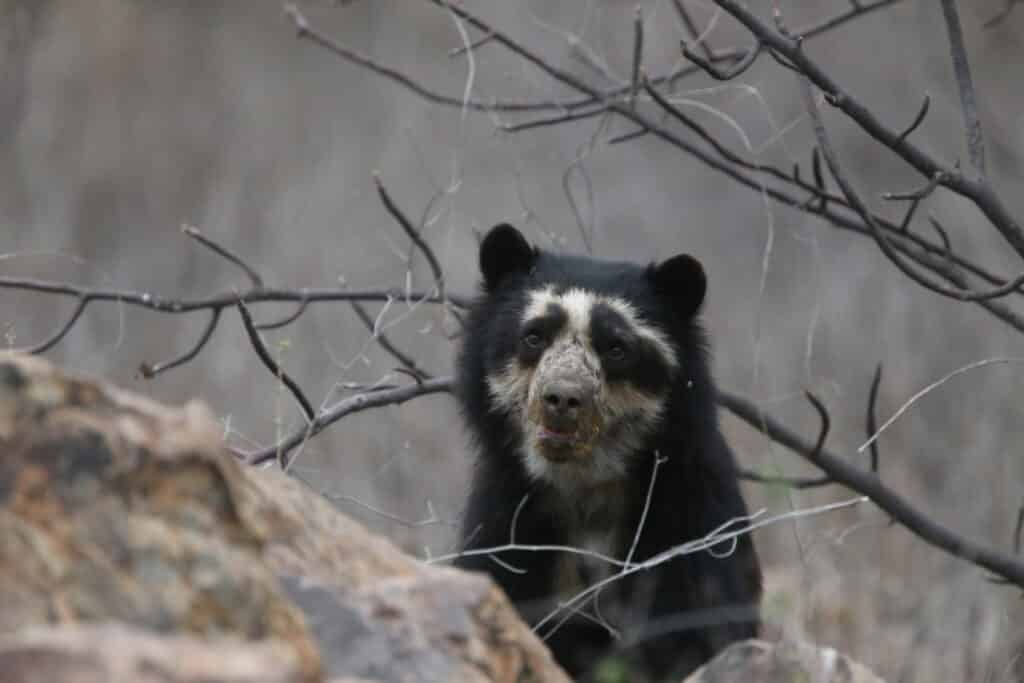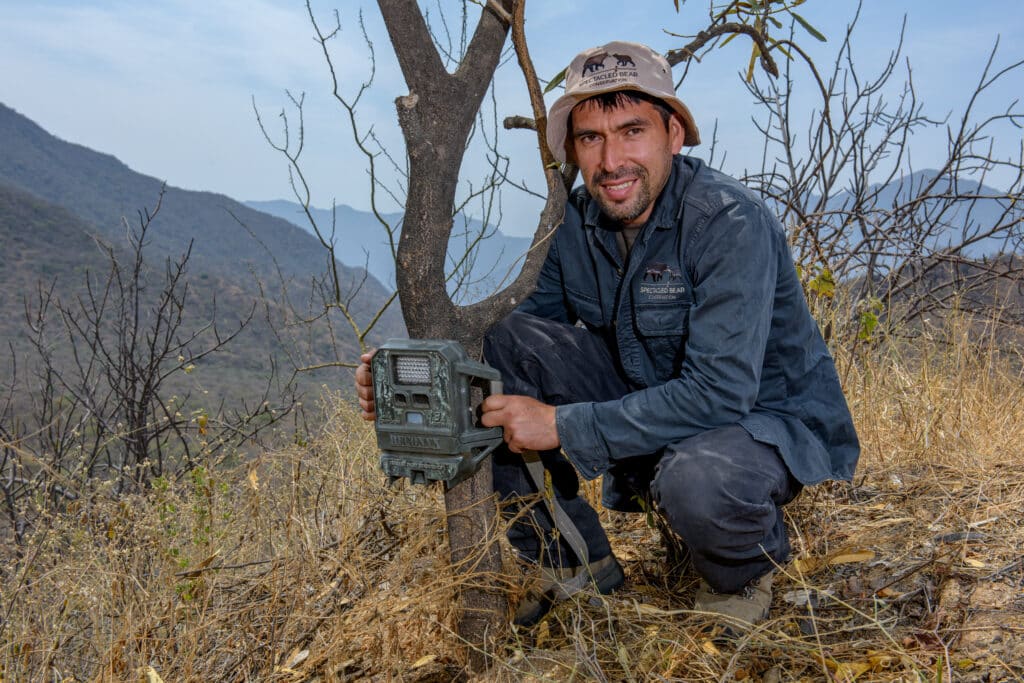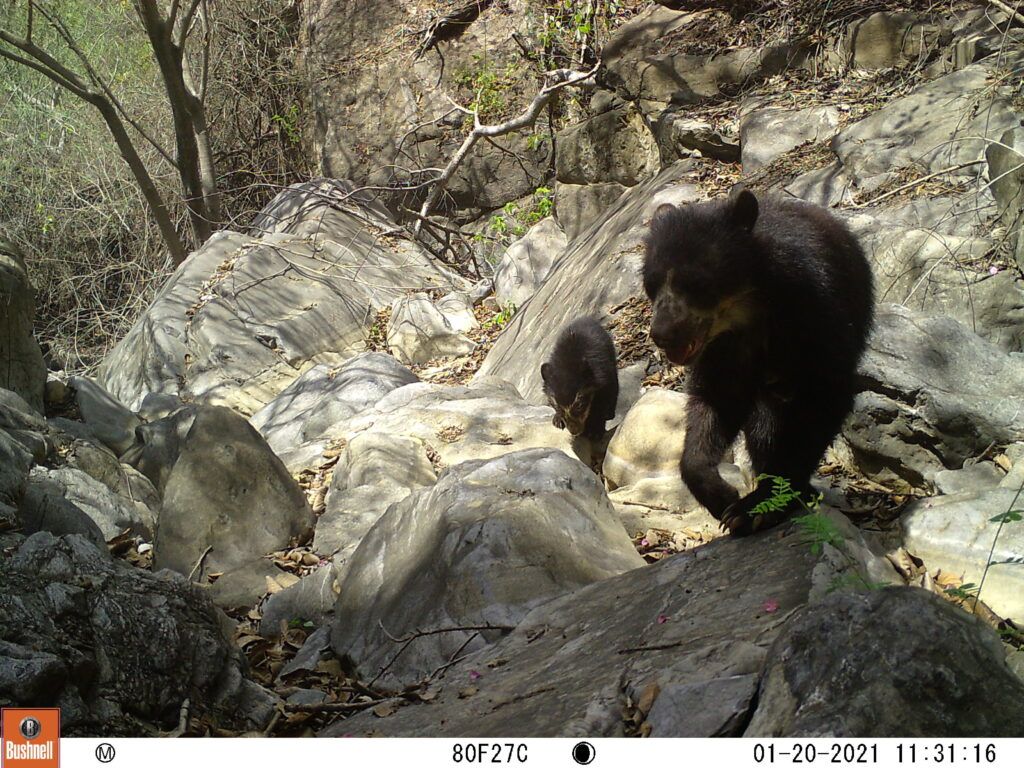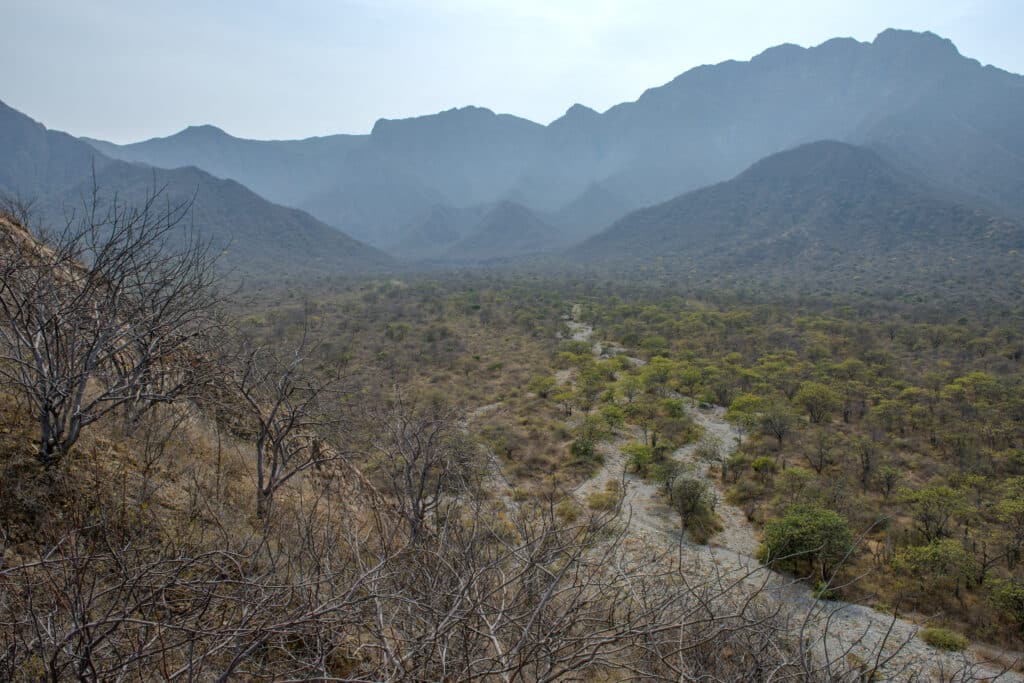Isai Sanchez squinted as he leaned closer to the computer screen, studying the camera trap footage for any signs of bears. Over 15 years as Spectacled Bear Conservation’s (SBC) Logistic Director has made Isai an authority on finding and identifying specific bears. But after months of combing through footage from northern Peru’s Salas community lands, 6,000 feet up the mountains, dread slowly crept into his mind—there were hardly any bears. SBC’s plans to protect Peru’s Tumbes bear population rested on the assumption that Salas was prime bear habitat. But Isai’s discovery turned those plans upside down.
SBC was working with the Salas Indigenous community to turn it into a protected area. Salas seemed like an ideal bear stronghold, filled with mountain forests and adjacent to the Laquipampa National Wildlife Refuge, where 40 bears reside. SBC placed 160 camera traps throughout the Tumbes region, including Salas, to evaluate the bear population and establish their range. Isai’s team of monitors collected the footage every eight weeks, pouring through piles of data for an entire year, but only found two bears in that time. They realized that Salas was too highly fragmented by human development to be suitable for bears, but the footage also revealed something else—the Calicantro land at the base of the mountains was buzzing with bear activity.
While the wildlife refuge houses most of the Tumbes spectacled bears, it’s not large enough to sustain them all. SBC originally thought that the bears wandered into Salas for food, but the camera trap data proved they were actually moving down into Calicantro to reach its dense sapote fruit groves. Calicantro also acts as a transit hub, uniting Tumbes’ isolated bears and allowing them to travel freely between the refuge, Salas, and neighboring Pan De Azucar. This makes Calicantro’s flatland dry forests the most vital habitat in the entire region.
Isai’s discovery was a complete surprise, but emboldened SBC to refocus their conservation efforts on Calicantro, not Salas. Research is the lifeblood of conservation, providing critical information that leads to the largest impacts in the right places. Time is always short when it comes to protecting endangered species, and without their camera trap data, SBC could have wasted years and precious funds securing the wrong habitat. With Calicantro being central to the region’s 60-75 bears, SBC now knows this land must be purchased and protected, no matter the cost. Were it instead sold to mining or agricultural interests, the Tumbes bears would lose their main food source and be permanently isolated from each other, dooming them to extinction.
Reinvigorated by this revelation, Isai and SBC have fully pivoted to purchasing Calicantro. They have made an agreement with the landowner and put down a first payment, and will spend the next several years raising funds for the full amount. Their research will continue once the purchase is complete, assessing the health of the bears and restoring Calicantro to peak condition. With ironclad data guiding their efforts, SBC is confident that this lasting plan to protect the Tumbes bears will boost their survivability.





3 Comments